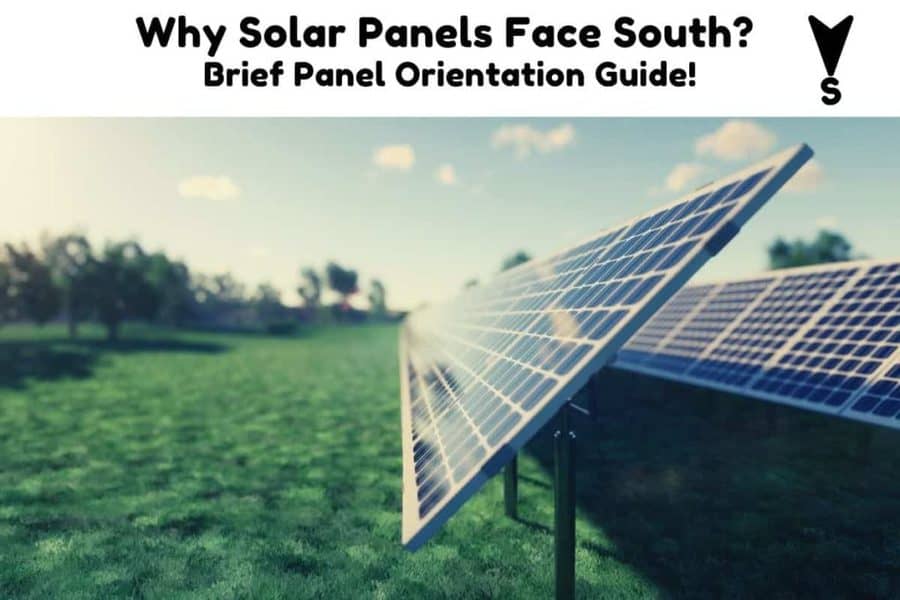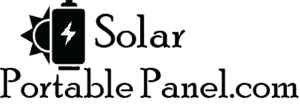The direction a house faces plays a part in how much sunlight it is exposed to in winter and summer. It determines how much natural light enters the home. Another reason why the orientation of a home is important is energy efficiency. With the right orientation, a home can significantly reduce its heating and cooling costs.
Homes in the northern hemisphere typically face north or south. As the sun rises in the east and sets in the west, the north-south orientation allows for both light and heat to enter the home throughout the day.
The orientation of a home is especially important for solar panels. In this article, we will look at why solar panels face south and if they should be oriented in a different direction.
The rule of thumb for homes in the northern hemisphere is that solar panels should face south. This is thought to be the best positioning because it allows the solar panels to receive direct sunlight throughout the day.
On a side note! If you’re in need of a reliable and high-performance portable solar panel, We strongly recommend the Jackery SolarSaga 100W Portable Solar Panel (Amazon Link).
With a high conversion efficiency and foldable design, this solar panel is easy to transport and set up, making it perfect for outdoor activities like camping, hiking, and RV trips.

The US solar cell technology used in this panel ensures that you get the most efficient and reliable solar charging possible.
There is also a 60W option that is more affordable (Amazon Link)
The positioning of solar panels is possibly the most critical factor in the performance of a solar panel. It has a big impact on how much energy it will produce. Positioning is just as important if not more so than the type of solar panel used.

What is solar panel orientation?
Solar panel orientation is the direction and angle of tilt of a solar panel. Solar panels can be set up to face north, south, east, or west depending on which hemisphere they are in.
In the northern hemisphere, they face south because the sun’s path falls in the southern part of the sky. In the southern hemisphere, the sun’s path falls in the northern part of the sky.
Why it is important to pick the right orientation?
Energy from the sun comes down in a straight line. Solar panels will harness the most energy when sunlight hits the panel’s surface at a right angle. Facing solar panels in the right direction ensures they are exposed to the highest intensity of solar radiation for the longest time. This ensures they produce the maximum amount of energy possible.
The more surface area exposed the more direct sunlight is received and solar energy produced. Orientation is the primary way of achieving this.
The sun is constantly changing its position as it moves through the sky from when it rises in the east and sets in the west. This makes finding the best orientation that produces the most amount of energy harder.
The challenge, therefore, is in finding the right orientation that ensures maximum sun exposure at all times of the day. Typically, solar panels are oriented to receive the most sunlight only for certain hours of the day. (Source)
Other factors that affect the performance of a solar panel
While orientation is possibly the most important factor in determining the energy output of a solar system, it isn’t the only thing to consider. There are other factors to look at. These include the type of solar panel, time, and tilt angle.
Type of solar panel
There are different types of solar panels and they each have a certain yield in terms of how much energy they produce. Monocrystalline and polycrystalline have the most yield because they are more efficient at converting sunlight to energy. Thin-film solar panels produce the least amount of energy because they are less efficient.
Time of the year
The number of hours of sunlight there is also important to how much energy is produced. Days are longer in summer so there are more hours of sunlight. The sun is also higher in the sky meaning the solar radiation is more direct and there are more peak hours of sunlight.
Winter has fewer hours of sunlight so naturally, you can expect a drop in the amount of solar energy produced by a solar panel.
Tilt angle
The sun is at a lower angle in the winter months. There is more atmosphere to pass through to reach the solar panel. The solar panel has to be at a more vertical angle to allow for a more perpendicular orientation that best captures the sun.
For more on this, check out our post titled Why Solar Panels Are Tilted?
Why more solar panels should be facing West not South?
Facing solar panels west and not south would allow them to generate energy at the hours when it is most needed. This would allow energy production during peak periods of use. West-facing solar panels capture more energy late in the afternoon.
Most people are at home later in the day. This is when demand for energy rises as more people are using their appliances. Pointing solar panels west or even south-west would increase energy production at precisely the times when it is in most demand. There’s thus less energy going to waste.
There is a study that supports facing solar panels west and not south. The research, based on data collected from fifty homes in Texas, found that west-facing solar panels produced 49% more electricity during peak demand.
The report also found that homeowners with west-facing solar panels used 65% less electricity from the grid during summer peak demand.
While this would increase energy output during peak periods, it would decrease energy output overall. West-facing solar panels produce less total energy over a year compared to south-facing solar panels. (Source)
Also check out if Solar Panels Work Behind/Through Glass/Windows & Indoors?
Should solar panels face true south?
Conventional wisdom says you should point your solar panels within 30 degrees of true south to generate the most energy over a year. Solar panels facing south will have higher yearly yields.
Some workarounds can allow maximum yield and maximum peak demand yield. A simple one would be a slight rotation from south to face slightly southwest. Another more robust solution would be to use a solar tracking system. (Source)
Why Use Solar Panel Tracking Systems?
While solar panels may be perfectly positioned to receive the sun’s energy, they are stationary and fixed in position. The sun, however, is constantly moving through the sky. Solar tracking systems maximize panel efficiency by tracking the sun and adjusting the solar panel’s orientation to compensate.
Using this type of system would mean installing the solar panels on the ground as opposed to the roof. Solar panel tracking systems are said to increase the energy produced by a solar system by between 25 to 30%.
